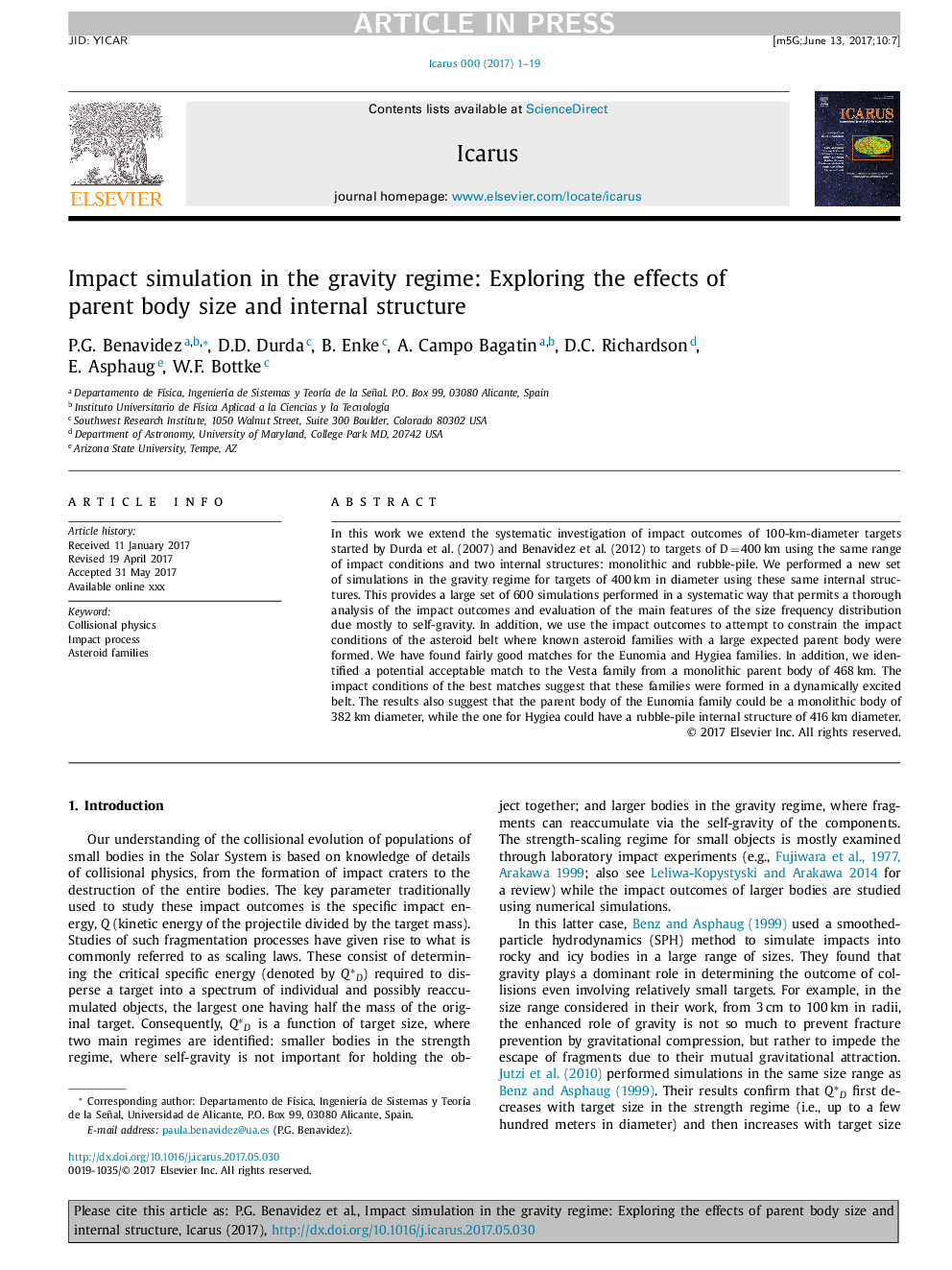| Article ID | Journal | Published Year | Pages | File Type |
|---|---|---|---|---|
| 8134439 | Icarus | 2018 | 19 Pages |
Abstract
In this work we extend the systematic investigation of impact outcomes of 100-km-diameter targets started by Durda et al. (2007) and Benavidez et al. (2012) to targets of Dâ=â400 km using the same range of impact conditions and two internal structures: monolithic and rubble-pile. We performed a new set of simulations in the gravity regime for targets of 400 km in diameter using these same internal structures. This provides a large set of 600 simulations performed in a systematic way that permits a thorough analysis of the impact outcomes and evaluation of the main features of the size frequency distribution due mostly to self-gravity. In addition, we use the impact outcomes to attempt to constrain the impact conditions of the asteroid belt where known asteroid families with a large expected parent body were formed. We have found fairly good matches for the Eunomia and Hygiea families. In addition, we identified a potential acceptable match to the Vesta family from a monolithic parent body of 468 km. The impact conditions of the best matches suggest that these families were formed in a dynamically excited belt. The results also suggest that the parent body of the Eunomia family could be a monolithic body of 382 km diameter, while the one for Hygiea could have a rubble-pile internal structure of 416 km diameter.
Related Topics
Physical Sciences and Engineering
Earth and Planetary Sciences
Space and Planetary Science
Authors
P.G. Benavidez, D.D. Durda, B. Enke, A. Campo Bagatin, D.C. Richardson, E. Asphaug, W.F. Bottke,
